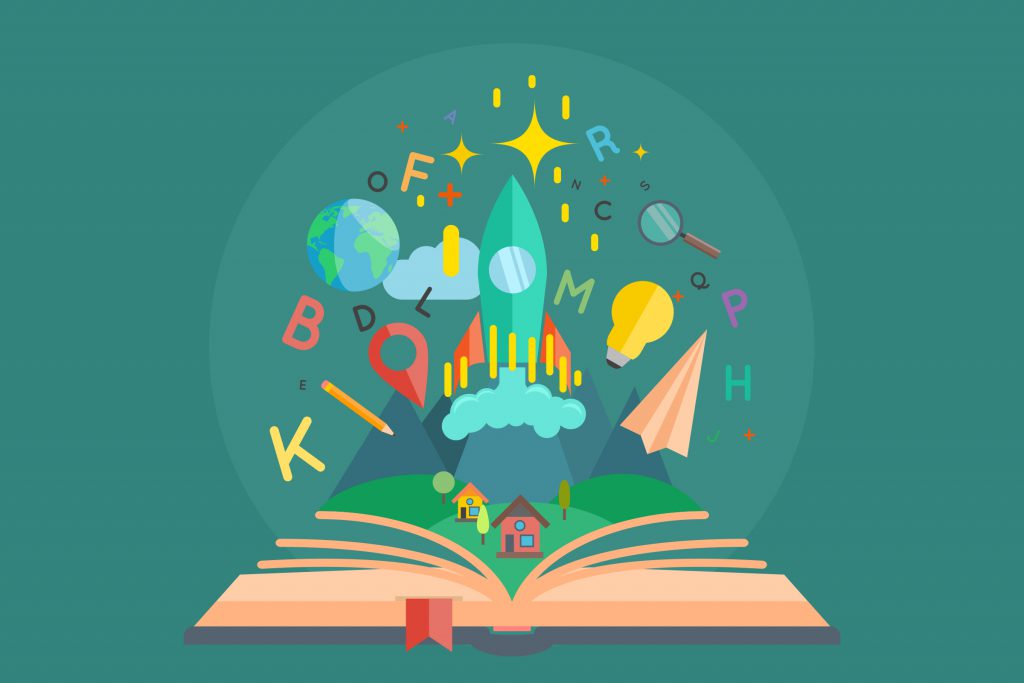Books are all about the text—except if they’re children’s books. These stories need images, not just for entertainment, but to inspire visual thinking and develop the literary skills of the kids reading them. This is where a children’s book illustrator comes in. These artists are commissioned by authors or publishing houses to bring words to life through the use of stunning visuals. But finding an illustrator for a children’s book can take a lot of managing and set you back between a few thousand bucks. So for some authors, it makes sense to simply just illustrate their own work. This is easy if you already have a bit of artistic talent, but even without it, illustrating a children’s book can be achieved with some inspiration, the right tools, constructive feedback, and a lot of practice.
Steps to Illustrate a Children’s Book
Illustrating a children’s book is a pretty straightforward process. But you’ll need to follow a step-by-step progression to get a good final result; you can’t just pick up a pen, start drawing, then call it good enough to plaster onto a story. It starts with choosing a medium (and learning to use that medium, if you don’t already know how), then it progresses into storyboards and drafts, which are improved by feedback. Only then can you begin to even imagine how the images will be laid out in your book later on.
Look for Inspiration
You can’t illustrate a children’s book without having a specific style in mind. You’ll need to know the tone and look that you want your illustrations to have; making sure that these fit well with your book and audience.
Even if you only have a rough idea, it’s good to look for inspiration, either from your favorite artists or other children’s books. Even random artwork or photographs can invoke the spark of creativity; so expose yourself to different styles, then mix-and-match them to suit your vision.
Choose a Medium
There are many different types of illustration styles for children’s books. They can be done as cartoons, with watercolors, realistic or highly-stylized, and even 3D-like! Additionally, illustrations will vary in size, from taking up just a small part of a page, to even a full spread across two pages! These are all factors to consider when you start to develop different ideas for the images you’d like to create. If you want to go down the route of creating illustrations from digital software, then you’ll need to take into account the amount of time it will take you to get comfortable within the program, and adjust to its learning curve.
Keep in mind that your medium should fit your abilities. You can always learn to work in a new one, but that may take quite some time, so it’s best to stick with what you know.
Work on the Characters
Children’s books always have main characters, and these figures often show up on most, if not all, of the pages of the story. It’s important to work on these characters visually, so that you can consistently re-create them across every image. Practice drawing the features of the characters with slight changes in their facial expressions, movements, etc., so that when the story progresses into different points you can easily illustrate each situation.
Make a Storyboard
Once you already have an idea about which parts of the story you’d like to illustrate, along with the style, and the characters of your book down pat, you can start creating a storyboard. This will help to outline the general look of your illustrations and how they can be inserted into different situations in your book. Your storyboard doesn’t have to be perfect nor final; rather, it acts as a guide to the implementation of your vision. You can also make rough drafts or sketches on your storyboard to practice your illustration skills even more.
Seek Feedback
In the same way that you needed feedback during the writing process, you’ll need constructive comments on your illustrations. You can ask fellow artists to give you some points of helpful criticism, along with tips on how to improve your technique. But when it comes to Children’s books, what’s truly important is how your illustrations are perceived by your audience. Get a few kids, even just your own children, nieces, or nephews, to tell you what they think of your visuals, and start to improve them based on their feedback. You should seek feedback both after making your first round of storyboards (to prevent yourself from wasting time on a bad idea, if any) and right before finishing your final drafts.
Design the Layout of Your Book
You’ve got the illustrations ready. Now, it’s time to figure out where they will each go within your book. This includes placing them on the right pages, alongside the corresponding text, as well as editing images, resizing visuals, and even designing the book cover. Once you have everything perfectly placed, you’re set to print!
To DIY or Hire an Illustrator?
Illustrating your own children’s book can be a great option because it gives you full creative control of your work. Plus, it saves you a bit of money. However, if you’re only going to end up with sub-par illustrations, hiring an illustrator might be a better investment. Bad illustrations can negatively affect your book sales later on, so unless you’re certain you can create unique and well-executed visuals, you might have to consider getting a professional.



